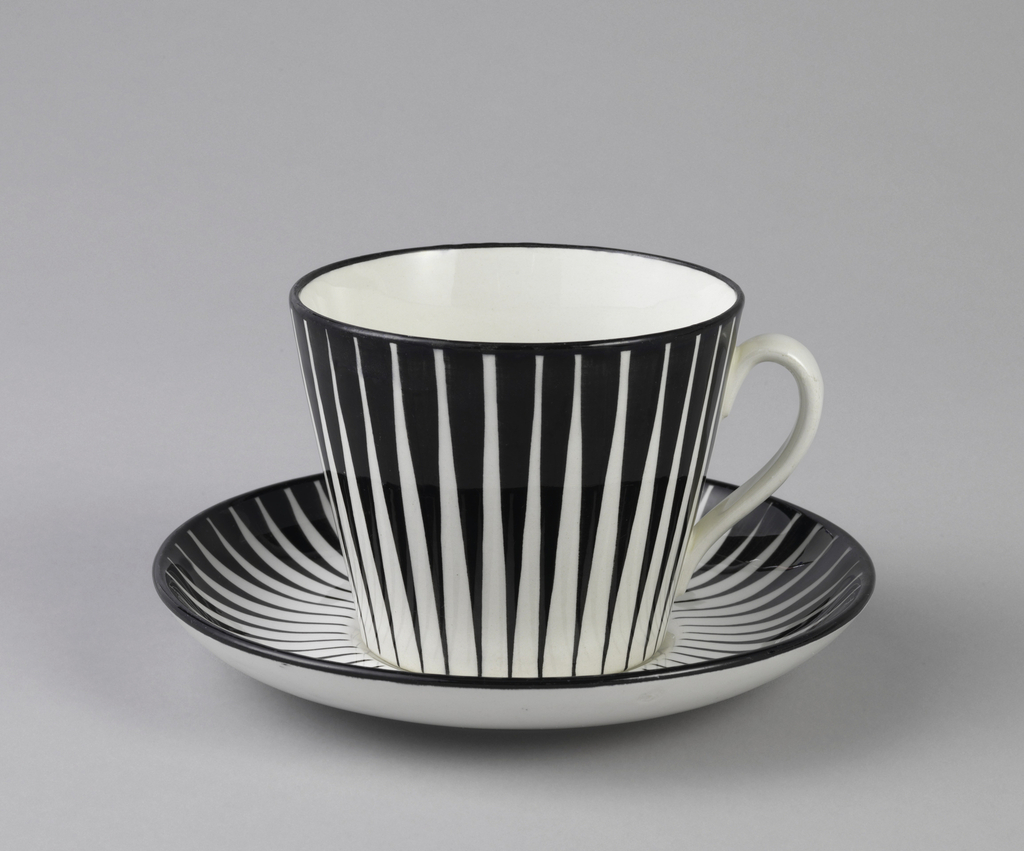In calculated contrast, sharp black wedges streak mathematically across a white ground. The black and white stripes that line Eugen Trost’s Zebra cup and saucer accentuate its tapered, circular form just as cleanly as they denote the wild zebra, from which it takes its name. These stripes, however, are hand painted.
The Gefle Porcelinsfabrik in Gävle, Sweden began manufacturing the Zebra cup and saucer in 1955, at the height of a major era in modern design. Starting in the late 1940s, Scandinavian design—encompassing the aesthetics of Denmark, Sweden, Norway, Finland and Iceland—took hold of a post-war Europe that craved interiors melding functionality with beauty. The austere lines and muted colors of Scandinavia’s humble furniture and tableware crafted a revised design language that translated to a universal stage with ease.
The function-first philosophy of Scandinavian designers is based upon enduring characteristics unique to a Scandinavian lifestyle. Each of the region’s five countries differs from the rest of Europe in that they employ social democratic models of government, creating people-centric societies. They focus on collaborative accomplishments to make life as simple as possible for citizens. The region’s frigid climate, which prompted people to spend a large portion of their time indoors, also called for comfortable, calming interiors. The hallmarks of mid-twentieth-century Scandinavian design were clarity, ease of use and natural materials.
The Zebra cup and saucer’s dynamic lines represented a new definition of beauty for post-war European design. In turn, the implications of Scandinavia’s sophisticated simplicity for design history were as explosive as the pattern on this duo.
The Zebra cup and saucer are now on view in the Cooper Hewitt exhibition Making Design.
Chelsea Butkowski studies art history and communication at SUNY Geneseo. She worked as a Peter Krueger intern in the Cooper Hewitt’s Product Design and Decorative Arts Department in summer 2014.
